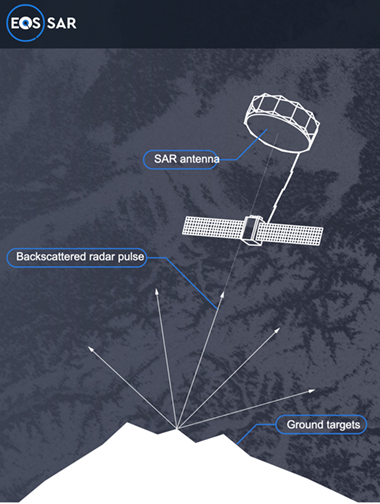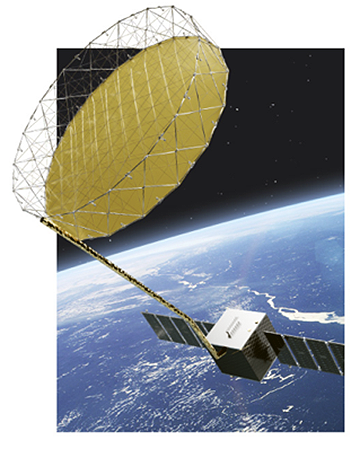
U.S.-based EOS Data Analytics Inc. (EOS), a space portfolio company of Noosphere Ventures, has unveiled EOS SAR – a project to develop its own synthetic aperture radar (SAR) sensors intended for deployment in a constellation of smallsats.

EOS SAR has been in stealth mode for more than two years. EOS has more than 5 years of experience in developing data analytics products and cloud services for optical and SAR data from satellites. Over the years, the company has developed an in-depth understanding of commercial and government remote sensing markets, which informed the decision to create its own SAR satellite constellation.
EOS engineers have already designed a radar prototype and are moving ahead with the development of a low-cost high-performance SAR payload for small satellites with ultra-high resolution down to 25 cm. EOS SAR satellites will operate in Stripmap and Spotlight modes (including interferometry) and will cover a wide range of applications. EOS is also considering dual-frequency SAR in X- and S-band on a single satellite. Dual-band operation increases versatility for all weather imaging and improves object-ground contrast. A special configuration of the radar front end allows for imaging of selected areas in both bands in a single orbit.

The SAR payload incorporates a deployable reflector antenna developed in-house at EOS. This antenna technology enables EOS SAR instrument to improve satellite efficiency and offer superior image quality. Moreover, the antenna itself has low mass and dimensional characteristics, making it more favorable and less costly to launch the satellite into orbit.
EOS is building a SAR satellite payload suitable for constellations enabling high revisit rates. A constellation of 12 satellites will provide 2-3 hours revisit time for a given area. The first SAR satellite launch is expected in 2022, with commercial constellation operations starting in 2023.
Max Polyakov, CEO of EOS and Managing Partner at Noosphere Ventures, said EOS learned that the remote sensing market has strong demand for high-resolution high-quality SAR data, but low supply of such data. The choice of SAR technology is driven by the need to image Earth’s surface through dense cloud cover, in any season and all weather. It is critical for users to have access to uninterrupted, persistent situational awareness. EOS is strategically leveraging deep expertise and diverse capabilities within Noosphere Ventures portfolio including radar electronics, deployable antennas, propulsion systems, batteries, and data analytics in order to create a SAR payload technology which delivers unsurpassed performance at an unbeatable price. At the same time, the company is open to cooperation and are currently looking for bus providers and a constellation owner to deploy and monetize the constellation. The constellation will be part of a fully U.S. owned and operated commercial remote sensing enterprise.
